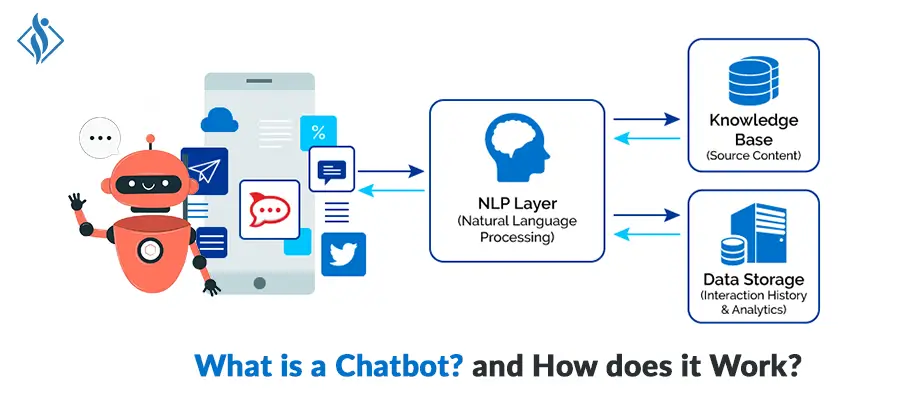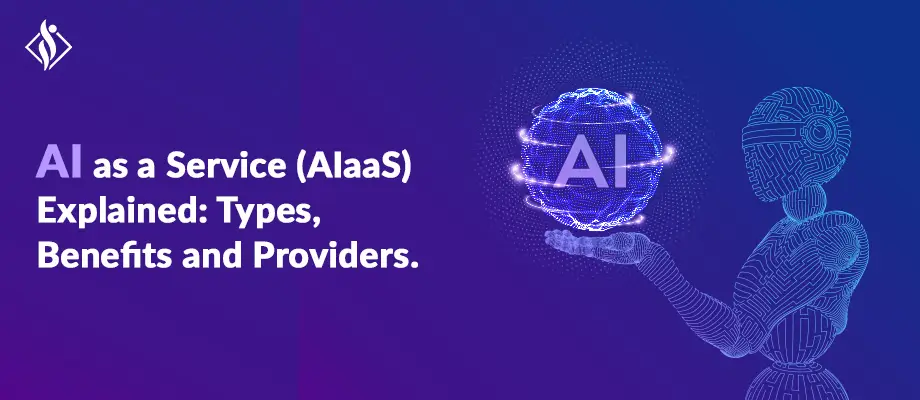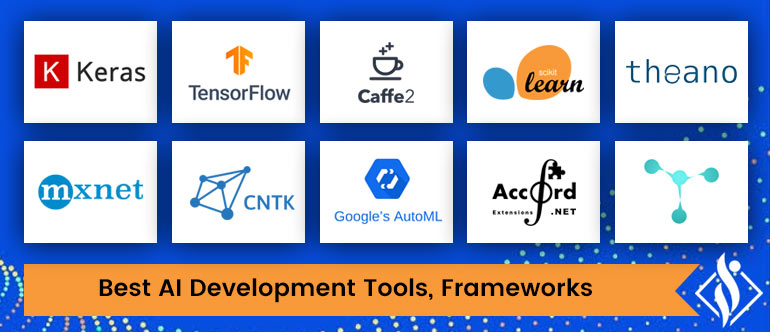Home » Artificial Intelligence » Chatbots Explained: Discover Types, Benefits, and Features
Chatbots Explained: Discover Types, Benefits, and Features

In the digital age, the way we communicate has undergone a significant transformation. From emails to instant messaging, and now to chatbots, the evolution has been rapid and revolutionary. But what exactly is a chatbot, and why is it becoming such an integral part of our online interactions? Let’s delve into the world of chatbots and explore their potential.
What is a Chatbot?
A chatbot, often simply referred to as a “bot”, is a software application designed to simulate human conversation. Whether you’re asking Siri about the weather or seeking customer support on a website, you’re likely interacting with a chatbot. These digital assistants can communicate through text or voice, providing users with information, solutions, or even just a bit of entertainment.
- The global chatbot market size is estimated at USD 5860.67 Million in 2023 and is expected to surpass USD 21082.56 Million by 2028.
How do Chatbots work?
At the core of every chatbot is a set of algorithms and rules that guide its responses. When you ask a question or give a command, the chatbot processes this input, matches it against its programming, and then delivers an appropriate response. Advanced chatbots, especially those powered by artificial intelligence (AI), can even learn from user interactions, making them more efficient over time.
What are the different types of Chatbot?
Their adaptability stems from the various types of chatbots available, each designed with specific functionalities in mind. Let’s delve deeper into the different types of chatbots and understand their unique features and applications.
1. AI-powered chatbots
These chatbots utilize artificial intelligence, particularly machine learning, to understand and respond to user queries. Unlike other chatbots that rely on predefined responses, AI-powered bots can learn from user interactions, improving their accuracy and efficiency over time.
- Applications: Customer support, personal assistants (like Siri or Google Assistant), and recommendation systems.
- Advantages: Personalized interactions, ability to handle complex queries, and continuous learning from user interactions.
2. Voice chatbots
Voice chatbots, as the name suggests, interact with users through voice commands rather than text. They are designed to understand spoken language and can provide audible responses.
- Applications: Smart home devices (like Amazon’s Alexa or Google Home), phone-based customer service, and hands-free device operations.
- Advantages: Convenient for users who prefer speaking over typing, ideal for visually impaired users, and enhances user experience in hands-free scenarios.
3. Menu-based chatbots
These chatbots guide users through a series of predefined options presented as menus. Users select from these options to navigate through the bot’s functionalities.
- Applications: Online ordering systems, feedback collection, and basic customer support.
- Advantages: Simplifies user interactions, reduces the chance of errors, and offers straightforward navigation.
4. Rules-based chatbots
Operating strictly on a set of predefined rules, these chatbots can only respond to specific inputs with specific outputs. They lack the flexibility of AI-powered bots and can’t handle queries outside their programming.
- Applications: FAQ sections, basic customer inquiries, and form submissions.
- Advantages: Consistent and predictable responses, low maintenance, and easy to set up.
5. Generative AI chatbots
These are advanced versions of AI-powered chatbots. Instead of relying on predefined responses, they generate their own answers using natural language processing (NLP). This allows for more organic and dynamic conversations.
- Applications: Advanced customer support, interactive storytelling, and research.
- Advantages: Highly personalized interactions, can handle a wide range of queries, and offers a more human-like conversation experience.
8 Benefits of Chatbots
In the modern digital age, chatbots have become essential for both businesses and consumers. Their presence across platforms has transformed our online interactions, shopping, and information-seeking habits. So, what’s behind the success of chatbots? Let’s explore their key benefits.
1. 24/7 Availability
- Round-the-Clock Service: Unlike human agents who need breaks, chatbots are available 24/7, ensuring that customers from different time zones and schedules can always find assistance.
- Consistent Performance: Chatbots don’t get tired or have off days, ensuring consistent service quality at all times.
2. Cost-Efficiency
- Reduced Manpower Costs: Chatbots can handle multiple queries simultaneously, reducing the need for a large customer service team.
- Training and Onboarding: Once set up, chatbots don’t require the continuous training that human agents might, leading to further cost savings.
3. Instant Responses
- No Waiting Time: Users receive immediate answers to their queries, enhancing user satisfaction.
- Efficient Problem Solving: For common issues, chatbots can provide instant solutions, speeding up the resolution process.
4. Personalized Interactions
- User History: Advanced chatbots can remember past interactions, allowing them to provide tailored responses based on user history.
- Product Recommendations: In sectors like e-commerce, chatbots can analyze user behavior and preferences to suggest relevant products or services.
5. Scalability
- Handling Traffic Spikes: During sales, promotions, or crises, chatbots can manage a surge in user queries without any decline in service quality.
- Adaptable Learning: As more users interact with them, chatbots can learn and adapt, ensuring they’re always equipped to handle evolving user needs.
6. Multilingual Support
- Global Reach: Chatbots can be programmed to understand and respond in multiple languages, making them ideal for businesses with a global customer base.
- Cultural Sensitivity: Advanced chatbots can be tailored to respect and recognize cultural nuances in communication.
7. Data Collection and Analysis
- User Insights: Chatbots can gather valuable data on user behavior, preferences, and feedback.
- Trend Prediction: By analyzing user interactions, businesses can predict market trends and user needs, allowing for proactive strategy formulation.
8. Integration with Other Digital Tools
- Seamless Experience: Chatbots can be integrated with other tools like CRM systems, payment gateways, or databases, providing users with a holistic digital experience.
- Automated Workflows: They can trigger automated processes, such as sending a follow-up email after a chat or updating user profiles based on chat interactions.
Which industries use Chatbots the most?
Chatbots have found their way into various sectors, revolutionizing customer service and operations:
- E-commerce: From helping shoppers find products to processing returns, chatbots enhance the online shopping experience. Online stores using chatbots saw a 30% rise in tracking orders, according to Kindly.
- Education: Bots can assist with course queries, student support, and even tutoring.
- Travel: Need to book a flight or find a hotel? Chatbots are here to help.
- Human Resources: From answering employee queries to onboarding new hires, HR chatbots are becoming indispensable.
- Healthcare: Bots can schedule appointments, provide medication reminders, or even offer basic medical advice.
- Finance Industry: Banking bots can help with account queries, transactions, and financial advice.
- Real Estate: Looking for a new home? Real estate bots can show listings, schedule viewings, and more.
7 Future of Chatbots
Chatbots have rapidly evolved in recent years, yet their full potential remains untapped. As digital communication enters a new phase, the future of chatbots promises even greater advancements and possibilities.
1. Emotional Intelligence
One of the most anticipated advancements in chatbot technology is the integration of emotional intelligence. Future chatbots will be equipped with the ability to recognize and respond to users’ emotions. By analyzing text patterns, voice modulations, and facial expressions (in video chats), chatbots will tailor their responses to the emotional state of the user, making interactions more human-like and empathetic.
2. Predictive Personalization
Imagine a chatbot that not only knows your preferences but can also anticipate your needs. Through the power of AI and machine learning, chatbots will analyze users’ past behaviors, preferences, and interactions to predict what they might need next. This could range from suggesting a new book based on your reading history to reminding you to order groceries when you’re running low.
3. Seamless Integration Across Platforms
The future will see chatbots that are omnipresent across all digital platforms. Whether you’re interacting with your smart home device, car’s infotainment system, or favorite shopping app, a unified chatbot will provide a consistent experience, remembering your preferences and offering tailored assistance no matter where you are.
4. Advanced Natural Language Processing (NLP)
While today’s chatbots are impressive, they sometimes falter with complex language structures or slang. The next generation of chatbots will boast advanced NLP capabilities, allowing them to understand context, idioms, and even regional dialects. This will make conversations smoother and more intuitive.
5. Proactive Interactions
Instead of waiting for a user’s prompt, future chatbots will initiate conversations based on real-time events. For instance, a finance chatbot might alert you about a sudden stock market dip, or a healthcare bot might remind you to take a break if you’ve been working too long.
6. Enhanced Security Features
With the increasing use of chatbots in sensitive sectors like finance and healthcare, ensuring data security will be paramount. Future chatbots will employ advanced encryption methods, biometric verification, and blockchain technology to safeguard user data.
7. Human-Bot Collaboration
Rather than replacing human roles, chatbots will work alongside humans to enhance productivity. In customer support, for instance, a chatbot might handle basic queries, but if a user has a complex issue, the chatbot will seamlessly transfer the conversation to a human representative, providing them with the conversation history for context.
In conclusion, chatbots are not just a fleeting trend. They represent a significant leap in how businesses and users interact online. As technology continues to evolve, the line between human and bot interactions might just become blurred.
With over 10 years of experience in Tech industry at Samarpan Infotech with architect system, problem solving and creativity. "Today is the only day. Yesterday is gone".



